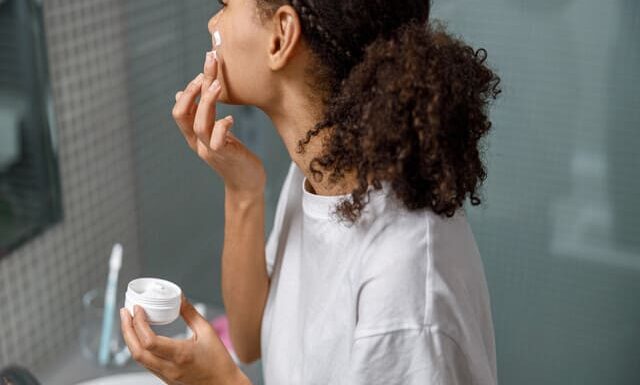When it comes to achieving healthy, radiant skin, we often focus on serums, moisturizers, and active ingredients. But what if one everyday habit is silently sabotaging all your efforts? According to dermatologists, over-cleansing—yes, something as seemingly harmless as washing your face too often or too aggressively—might be the number one culprit behind a compromised skin barrier.
In this article, we’ll explore the science behind the skin barrier, how over-cleansing disrupts its function, and what you can do to restore and protect it. Backed by dermatological research and clinical data, this guide is a must-read for anyone serious about long-term skin health.
What Is the Skin Barrier and Why Does It Matter?
Your skin barrier—also known as the stratum corneum—is the outermost layer of the epidermis. It’s composed of corneocytes (dead skin cells) and lipids (fatty acids, ceramides, and cholesterol), often described using the “brick and mortar” model.
Key Functions:
- Prevents water loss (transepidermal water loss, or TEWL)
- Blocks entry of harmful microorganisms and pollutants
- Maintains skin hydration and pH balance
- Regulates inflammation
A healthy skin barrier is essential for glowing, resilient skin. When it’s damaged, it can lead to dryness, flakiness, redness, sensitivity, acne, and even conditions like eczema or rosacea.
The Hidden Habit: Over-Cleansing
Cleansing is an essential skincare step, but when done too frequently, too harshly, or with the wrong products, it can wreak havoc on the barrier.
What Over-Cleansing Looks Like:
- Washing your face more than twice daily
- Using hot water or scrubs with abrasive particles
- Applying foaming cleansers with sulfates or high pH
- Double cleansing when you’re not wearing sunscreen or makeup
The Science:
A study published in the International Journal of Cosmetic Science (2013) found that cleansers with high pH and surfactants significantly increase TEWL, indicating barrier damage. Another 2018 review in Skin Research and Technology confirmed that frequent cleansing alters the microbiome and lipid composition, leading to irritation and inflammation.
Why Your Cleanser’s pH Matters
The skin’s natural pH is slightly acidic, typically around 4.5–5.5. This acid mantle supports beneficial skin flora and barrier integrity.
Many conventional cleansers have a pH of 7 or higher, which can:
- Disrupt the skin’s acid mantle
- Encourage bacterial overgrowth (e.g., C. acnes)
- Impair enzyme function necessary for lipid synthesis
Research Insight:
According to a 2016 study in Dermatology Research and Practice, pH-balanced cleansers preserve skin function better than alkaline ones and are particularly crucial for individuals with sensitive or aging skin.
How Over-Cleansing Damages the Skin Barrier
1. Strips Natural Oils
Cleansers that are too aggressive remove not only dirt and impurities but also essential lipids and sebum, which are vital for keeping the skin hydrated and protected.
2. Increases Transepidermal Water Loss
Without its protective lipid layer, the skin loses moisture rapidly, leading to dryness, tightness, and scaling. TEWL is a clinical marker used to assess barrier integrity.
3. Disrupts the Skin Microbiome
The skin is home to millions of beneficial microorganisms that help defend against pathogens and modulate immune responses. Over-cleansing reduces microbial diversity, potentially triggering inflammation and sensitivity.
4. Leads to Inflammation and Breakouts
Ironically, aggressive cleansing aimed at preventing acne can result in increased breakouts, as a damaged barrier becomes more reactive and prone to inflammation.
Who Is Most at Risk?
Certain skin types and habits make people more vulnerable to over-cleansing damage:
- Oily or acne-prone individuals using strong cleansers multiple times daily
- Mature skin, which has naturally fewer lipids
- People with eczema or rosacea, whose barriers are already compromised
- Skincare enthusiasts layering actives like retinoids and AHAs without adequate barrier support
Signs Your Barrier Is Damaged
- Persistent dryness and tightness, even after moisturizing
- Redness or flakiness, especially around the nose and cheeks
- Burning or stinging when applying products
- Sudden breakouts or inflammation
- Shiny but dehydrated skin (a paradox common in over-cleansed oily skin)
How to Fix and Protect Your Skin Barrier
1. Cleanse No More Than Twice a Day
- Morning cleansing can be optional, especially for dry skin.
- Always cleanse at night to remove sunscreen, pollution, and sebum.
2. Choose a pH-Balanced, Gentle Cleanser
- Look for labels that state “pH-balanced” or “soap-free”.
- Ingredients like glycerin, panthenol, and ceramides help preserve hydration.
Recommended Examples:
- CeraVe Hydrating Cleanser
- La Roche-Posay Toleriane Dermo-Cleanser
- Vanicream Gentle Facial Cleanser
3. Ditch Hot Water
- Use lukewarm water, as hot water strips oils and damages capillaries.
4. Avoid Physical Exfoliants
- Swap grainy scrubs for chemical exfoliants (used sparingly), like lactic acid or PHAs, which are gentler.
5. Restore the Barrier With Lipids and Humectants
Key ingredients to look for:
- Ceramides
- Cholesterol
- Fatty acids
- Hyaluronic acid
- Squalane
6. Introduce Barrier-Friendly Practices
- Limit actives like retinoids and AHAs to 2–3 times per week.
- Follow with a moisturizer rich in occlusives.
- Use occlusive balms (like petrolatum or lanolin) if skin is raw or cracked.
How Long Does It Take to Repair the Skin Barrier?
With the right care, mild barrier damage can heal in 3–7 days. Severe cases may take 2–4 weeks. Patience and consistency are key.
According to a 2020 paper in Skin Pharmacology and Physiology, daily application of ceramide-rich moisturizers improved TEWL and barrier function within a week in subjects with sensitive skin.
Conclusion: Gentle Is the New Effective
The skin barrier is your body’s first line of defense, and its health is non-negotiable. While cleansing is essential, doing it too much or the wrong way can undo everything else you’re doing right.
If your skin is feeling tight, red, flaky, or unpredictable, take a step back and evaluate your cleansing habits. Often, one small adjustment—like switching to a gentler cleanser or reducing washing frequency—can completely transform your skin.
When in doubt, listen to your skin, prioritize its barrier, and embrace the philosophy that less is often more.

